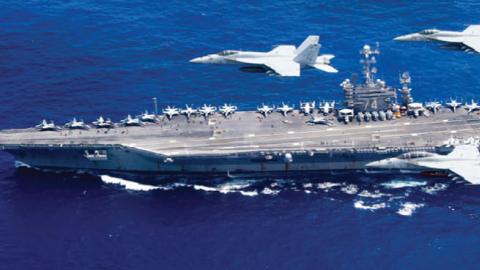The rise of China and its attitude towards the world forces the United States to address the challenges posed by China’s ambitions. As a result, the United States has clearly identified China as a competitor; the latest National Security Strategy, released in December 2017, states that “China and Russia challenge American power.” That same year, Vice President Mike Pence spoke at the Hudson Institute and said “Beijing is employing a whole-of-government approach, using political, economic, and military tools, as well as propaganda, to advance its influence and benefit its interests in the United States.” Now, U.S.-China competition is escalating, especially so since January 2018, when the U.S.-China “trade war” began. The United States needs to win the competition to protect the U.S.-led rules-based order.
Given the United States’ need to win the competition, cooperation with allies and like-minded countries is key because historically, the number of political partners has been a decisive factor in geopolitical struggles. For example, in World War I, the winning side comprised of 32 countries, but the losing side was composed of just 4 countries. In World War II, the winning side had 54 countries, but the losing alliance consisted of only 8 countries. During the U.S.-Soviet Cold War, the winning side had 54 countries, but the defeated comprised 26 countries. These facts indicate that the number of supporters correlates to the likelihood of winning the competition.
In the case of the current U.S.-China competition, the U.S. has many formal allies including NATO, Central and South American countries, Israel, Australia, New Zealand, Thailand, the Philippines, Taiwan, South Korea, and Japan (52 in total), but China’s only formal ally is North Korea.[3] Beyond formal allies, the U.S.’s circle of like-minded relations expands to include countries like the UAE, Saudi Arabia, India, Vietnam, Singapore, Indonesia, and others.
In June 2019, the U.S. Defense Department published its Indo-Pacific Strategy Report. In this document, the U.S. expresses its perception of which countries are allies and like-minded partners in the Indo-Pacific region and explicitly names those countries. Though Pakistan and Myanmar are cooperating with China, the three are not formal allies. And currently, Myanmar is rethinking its relationship with China. Presently, China has started many infrastructure projects under the Belt and Road Initiative, which have saddled countries accepting Chinese aid and investment with enormous debt. China then leverages this debt and makes those countries support pro-China policies. As a result, when Sri Lanka turned away from its pro-China policy, China demanded payment of the debt and has taken control of Sri Lanka’s Hambantota Port for 99 years.
Therefore, maintaining and improving collaboration with its allies and like-minded countries in the Indo-Pacific will be key for the U.S. However, when many countries try to cooperate, challenges arise due to varying perceptions about capabilities, strategies, and interests. It is of increasing importance to identify and understand the perceptions of those cooperating in this region because the current security arrangement may not be sufficient to address the challenges ahead. This report includes the views of scholars studying the United States, Vietnam, Singapore, ASEAN, Australia, India, Sri Lanka, U.K., France, EU, Canada and Japan. Even if what I can do is very limited, I am hopeful that this report will promote understanding and contribute to the victory of the United States, its allies, and other like-minded countries.






















